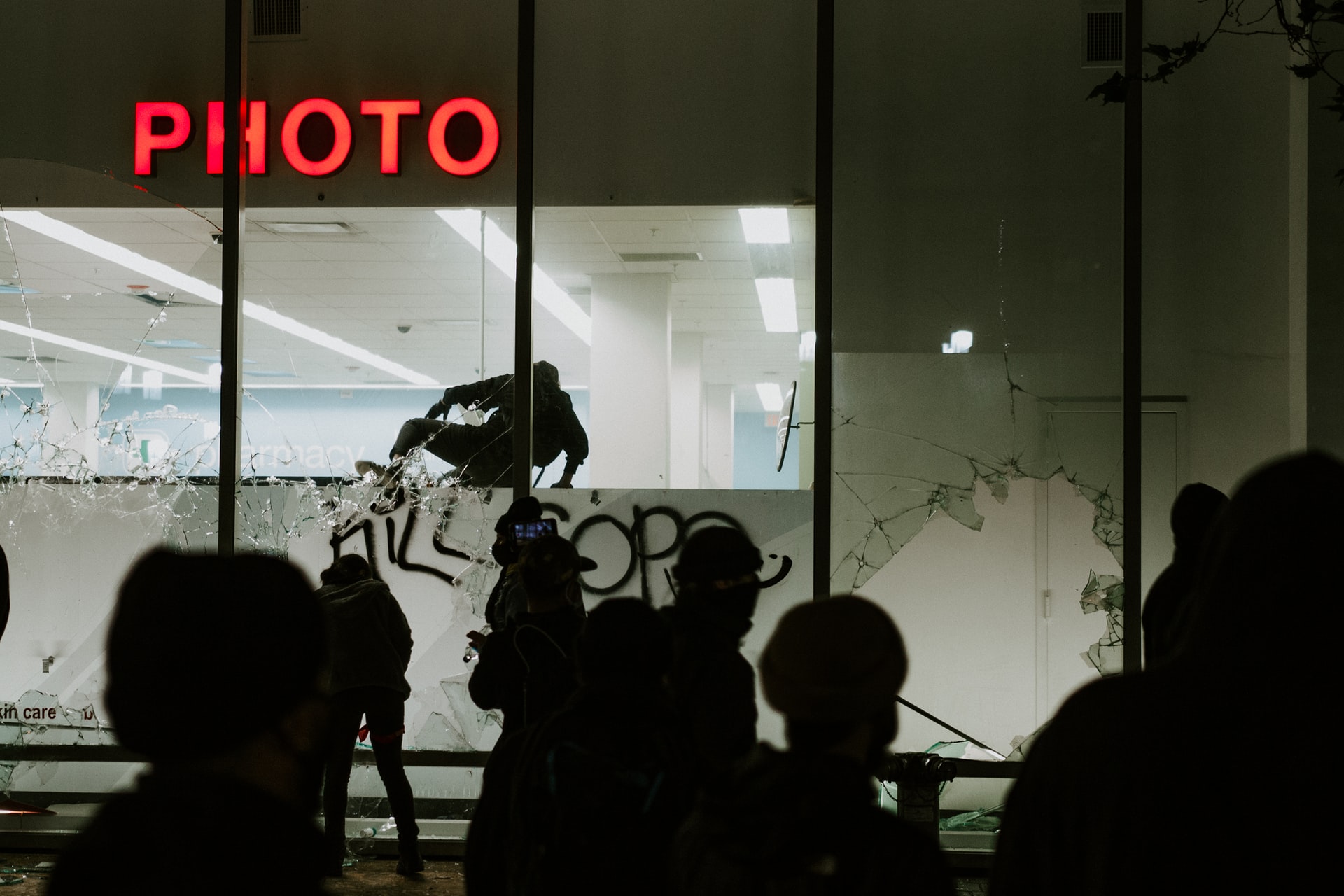With only 23 looting days until Christmas, brazen robbers are redoubling their efforts to steal holiday cheer- from this year and the next.

A series of smash-and-grab, flash-mob type robberies have resulted in shopping districts in major cities again boarding up shopfronts- just in time for the holidays.
This is, of course, terrible news for small businesses, corporations, shoppers, and just about everyone else.
The only people who like looting are criminals and journalists.
Since store owners did the same boarding-up routine after the murder of George Floyd last May, and again in anticipation of violence after the 2020 election, it is to be hoped that beleaguered merchants have at least been able to reuse the plywood.
“The social covenant has shattered,” lamented opinion writer Leonard Pitts Jr. this week for the Tampa Bay Times. Between mentioning, “breaking social norms,” and blaming Donald Trump, Pitts never mentioned, “breaking the law,” even once.
Members of the press, who largely tend to lean Democratic, are certainly anxious to lay all the problems the nation is currently facing at the feet of COVID-19, and preferably at the feet of the previous administration if possible. Rising inflation- the higher prices we are all seeing at the gas pump, in the grocery store, and everywhere else- is reliably the top-of-mind issue for most voters this December.
Far behind it, but still ahead of concerns about COVID-19, are the public’s growing concerns about sharply rising rates of violent and property crime.
As the LA Times patiently explains to its readers- in a 2,500 word missive encompassing everything from hyper-inflation in 1930’s Germany to FDR to William Jennings Bryan’s 1896 “Cross of Gold” speech to Ronald Reagan: “There’s a right way and a wrong way to think about inflation. Here’s a right way.”
Yeah; good luck with that, LA Times. That’s definitely what the working-class needs this holiday season; a more nuanced historical and economic context for higher prices.
Added to the annals of favorably tone-deaf media coverage which does nothing for Democratic Party prospects at the mid-terms, or at any other time, is 538’s tortured explanation about, “Why Crime Likely Won’t Be An Issue In The 2022 Midterms.”
“The uptick in crime might not affect as many people as it once did,” the author writes, because, “recent trends in geographic polarization have shown that the places experiencing the greatest surge in crime today — cities and inner suburbs — are largely Democratic strongholds.”
“In other words,” summarizes Daniel Cox, in case it wasn’t abundantly clear; “there are simply not that many swing voters living in the areas most affected by rising violence.”
What a relief that is likely to be to voting Democrats everywhere. Not to mention, all this rosy outlooking is emanating from a single assumption- and it’s a big one with no evidence to support it.
That crime and inflation in the U.S. isn’t going to get worse.
If the optimists are right, and all these worsening social problems like crime and inflation are merely results of COVID-19, they all should recede with the pandemic and as such might be gone by next November.
That is a fine idea, it might even be true. But it might also be wrong. And if it is, crime might not be as pressing an issue as inflation now; but it might have worsened considerably in a year’s time.
Especially as the crime wave shows no signs of slowing.
There is no shortage of information about how various nations are coping with the aftermath of the initial pandemic, the consequences of the drastic mitigation measures we took, and life with a new virus.
Most nations are not grappling with skyrocketing rates of crime. Nor, as 538 so blithely, if unintentionally pointed out, did all U.S. states experience rising crime and inflation at the same rate.
Some states and countries, in spite of higher COVID-19 numbers, fared better with regards to crime and inflation.
There is also the undeniable link between crime and inflation, which no one from the LA Times to Washington, D.C. is even mentioning.
These latest high-profile looting episodes are only the most recent symptom of a much bigger problem. In some areas, San Francisco being a prime example, chain stores like Walgreens have had to close locations and abandon the area. Some stores were losing $1,000 a day, every day, due to theft.
And this was in spite of spending many times over the national store average on security measures and additional personnel.
How small businesses are managing is anyone’s guess.
Retail businesses lose money every year due to theft. The industry refers to theft of merchandise by customers or employees as “shrinkage.”
Shrinkage is a cost of doing business and stores do everything they can to mitigate it. Businesses don’t just eat these costs, either; on the contrary. Every bit of shrinkage gets ultimately passed along to customers in the form of higher prices.
The higher prices we are currently seeing are a result of many factors. Million-dollar losses suffered by retail businesses over the past year is one of them.
(contributing writer, Brooke Bell)